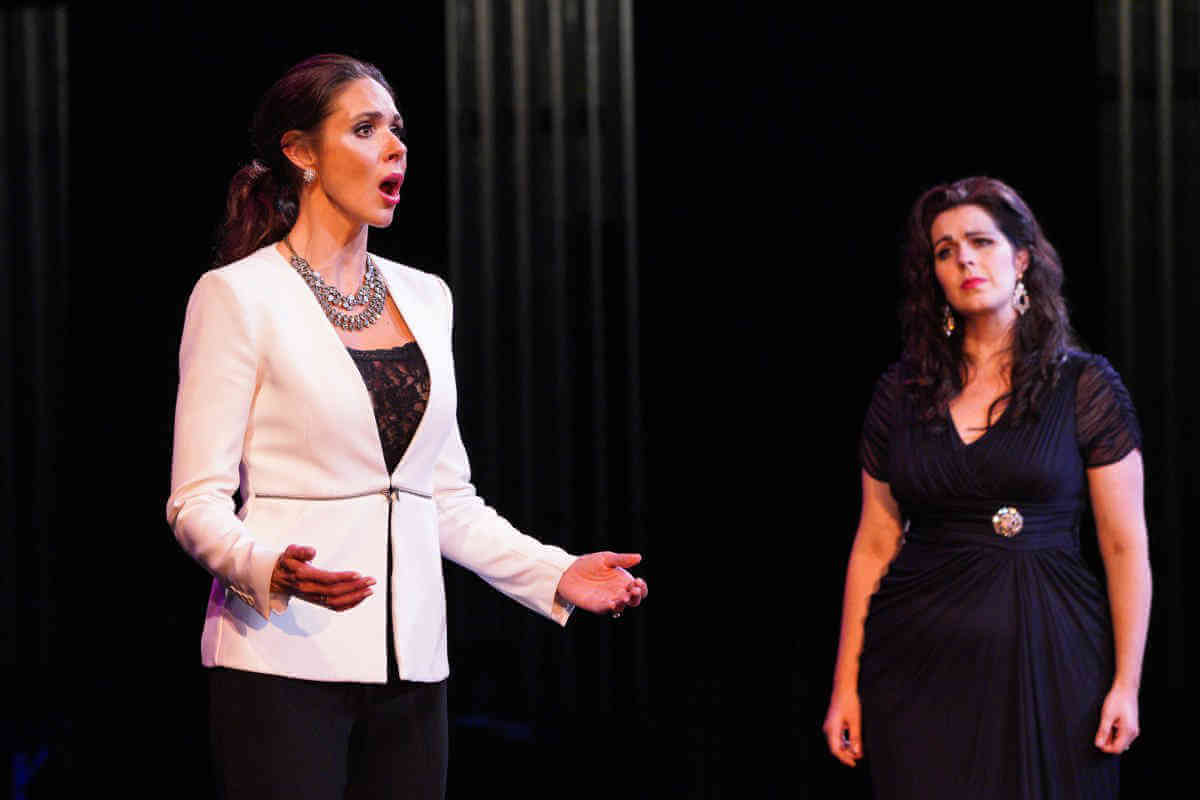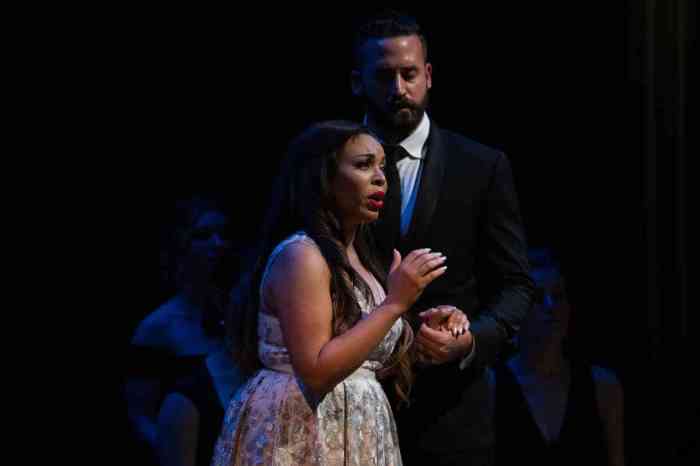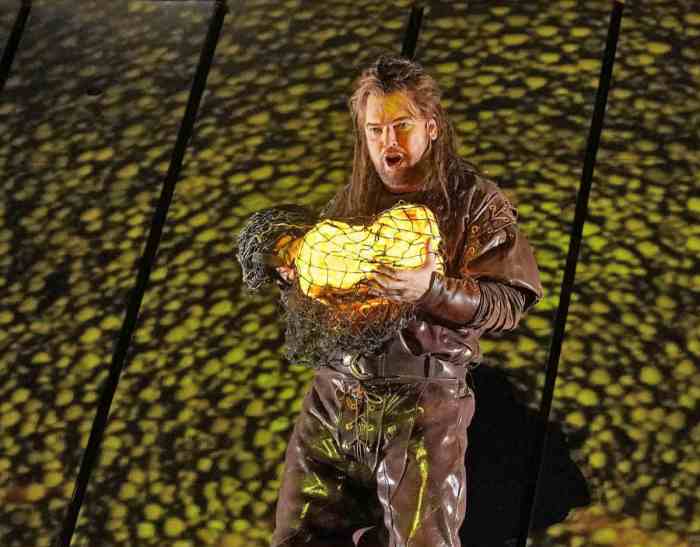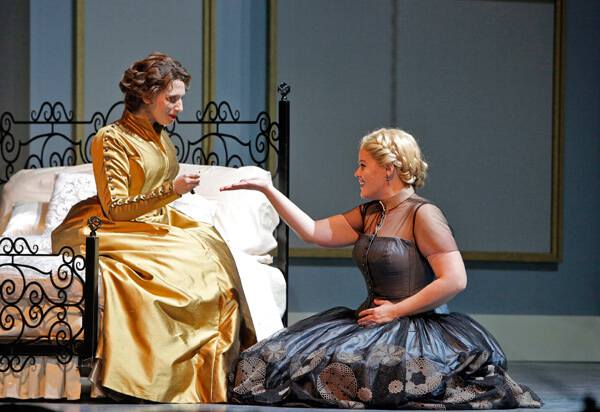The theme of the inaugural season of Will Crutchfield’s Teatro Nuovo Summer Festival at Purchase College was “The Dawn of Romantic Opera,” which according to Crutchfield happened in Italy in 1813. In February of that year in Venice, 21-year old Gioachino Rossini scored his first breakthrough triumph with the opera seria “Tancredi. In November 1813 in Naples, 50-year-old Bavarian-born Giovanni Simone Mayr scored his greatest theatrical success with “Medea in Corinto.” Teatro Nuovo presented both operas in three (barely) semi-staged concerts.
Rossini in “Tancredi” stuck with the old opera seria conventions — a high-voiced contralto hero (in place of the vanishing baroque castrato), an emphasis on florid vocalism, secco recitatives, and a happy ending. The French-derived Bourbons of the Two Sicilies who ruled Naples in the first quarter of the 19th century influenced the artistic direction of the Teatro San Carlo to emulate French tragédie-lyrique models. Mayr in “Medea” shows the influence of Gluck, Haydn, and Mozart, featuring two tenor protagonists, expressive declamation inspired by Gluck’s French reform operas, and a large symphonic orchestra accompanying the recitatives.
Rossini took over as house composer at the San Carlo in Naples in 1815 and the innovations attributed to his Neapolitan operas are already present in Mayr’s “Medea in Corinto.” Also present at the “Medea” premiere were the singers who later triumphed in Rossini’s great Neapolitan masterpieces: Rossini’s future wife Isabella Colbran as Medea, baritenor Andrea Nozzari as Giasone, and Manuel García as Egeo. “Medea in Corinto” (based on classical tragedies by Euripides and Corneille) also introduced a neophyte librettist — one Felice Romani who eventually became the great librettist of the bel canto era providing librettos for Bellini (“Norma”), Donizetti, and Verdi. Mayr’s dramatic inspiration and musical genius are on a lower level than Rossini or Cherubini in his “Medeé.”
Mayr’s music, though elegant and well crafted, often falls into routine formulas. It seldom evokes terror and awe, except in Medea’s Act II invocation to vengeful demons “Antica Notte.”
Jennifer Rowley as Medea lacked the dramatic fire of a Giuditta Pasta (who took over Mayr’s opera in the 1820s and 1830s) or Maria Callas in the Cherubini “Medea.” Rowley was more the proud abandoned queen than the scorned fury or pagan sorceress. She lavished a velvety and luscious full lyric soprano voice on Medea’s low-lying expressive declamation. The part sits in the middle range with only a few declamatory high notes and little of the virtuoso coloratura writing that Rossini composed for Colbran in “Armida” and elsewhere. Rowley rose to powerful authority in Medea’s Act II invocation to vengeful demons “Antica Notte.”
The two tenors were contrasted: Derrek Stark as Giasone (the Nozzari role) sang with a bright and firm tenor in broad declamatory phrases that had a golden gleam that matched his glittery gold lamé dinner jacket. The silvery tenore di grazia of Mingjie Li as Jason’s rival King Egeo nimbly executed the florid writing and high notes with ease. The ill-fated Princess Creusa, who has ditched Egeo to become Giasone’s second wife, also is a high coloratura in contrast with her rival, the darkly dramatic Medea. Creusa’s vocal line is delicate and artfully decorated. Teresa Castillo’s pure coloratura soprano communicated mournful pathos and deep foreboding but also delivered the vocal gymnastics with brilliance. Young artists Elena Snow, Christopher Bozeka, and baritone William Lee Bryan as King Creonte gave solid support.
Conductor Jonathan Brandani led the Teatro Nuovo Orchestra in a fluent reading of the “Medea” score.
Mayr’s sophisticated hybrid style integrates the 18th century classical German-Austrian developments in harmony and orchestration with the voice-driven emotionalism of Italian Opera. He transmitted this style to his students — notably prize pupil Gaetano Donizetti.
“Tancredi” (based on a Voltaire tragedy) established Rossini as the rising star of Italian Opera — within a decade he conquered all of Europe earning the sobriquet “The Napoleon of Music.” “Tancredi” premiered in Venice with the mandated happy ending — a later Ferrara production occasioned a stark, discordantly Monteverdian death scene that closely followed the original Voltaire tragedy. Rossini added new arias for various productions around Italy (replacing both of Tancredi’s and Argirio’s arias) — eventually providing alternate music for nearly half the score. Crutchfield presented “Tancredi” with the alternative arias and tragic ending as “Tancredi Rifatto” on August 5.
Tamara Mumford’s Tancredi in the original Venice version was more the lyrical and reflective lover than ballsy bravura warrior. Mumford’s oboe-like tone is mournful and moving, especially in long-lined cantilena. Her mellow low mezzo lacks tonal thrust (especially on the bottom end) and her coloratura has limited speed (she also lacks a trill). Her alternate in “Tancredi Rifatto” was the rising young mezzo-soprano Aleks Romano. Her Tancredi was more the warrior and bravura bel canto technician. Romano’s rounded tone possessed a brilliant ring from top to bottom and she attacked the machine gun coloratura with commanding gusto. I think the extroverted Romano could have handled the lively Venice happy ending with more panache while the introvert Mumford would have found the spare, expressive writing of the tragic ending more congenial.
As the falsely accused Amenaide, young coloratura soprano Amanda Woodbury confirmed the fine impression she made at the Metropolitan Opera as Juliette and Leila in “Les Pêcheurs de Perles.” She sang her arias with cool precision and blended beautifully in thirds in duet with Mumford. The “Rifatto” alternate Amenaide, newcomer Christine Lyons, was a revelation. Woodbury took an instrumental approach to Amenaide’s music while Lyons’ quick vibrato and complex timbre brought greater emotional immediacy to Amenaide’s conflict between duty and desire. Both sopranos handled the florid passages with musicianship and flair.
As Amenaide’s aggrieved father Argirio, Santiago Ballerini lavished gleaming, golden tenor tone and frank emotionalism on the music more suitable to Bellini or Donizetti than Rossini. In “Tancredi Rifatto,” David Margulis brought a lighter, more dulcet-toned Rossini tenor to Arigirio’s less florid, more heroic replacement arias. As with the two mezzos, the two tenors might have profitably swapped assignments.
During his 20 years at the Bel Canto at Caramoor festival, Maestro Crutchfield had the benefit of the experienced and highly polished Orchestra of St. Luke’s as his pit band. The newly formed Teatro Nuovo Orchestra is a period ensemble playing at a lower pitch on historical instruments — natural horns, wood flutes, and gut strings. Leading “Tancredi” from the fortepiano in collaboration with first violinist Jakob Lehmann, Crutchfield had trouble keeping the woodwinds and horns in tune. There were several moments of less than precise ensemble. The musicians seem to be mostly young and fresh from school (like the supporting singers). It takes time to forge an orchestra into a polished ensemble. All the performances were poorly attended — this festival will need time to find its footing and its audience. What we did hear was full of exciting promise and enriched the listener with a combination of musical scholarship and sheer beauty.



































